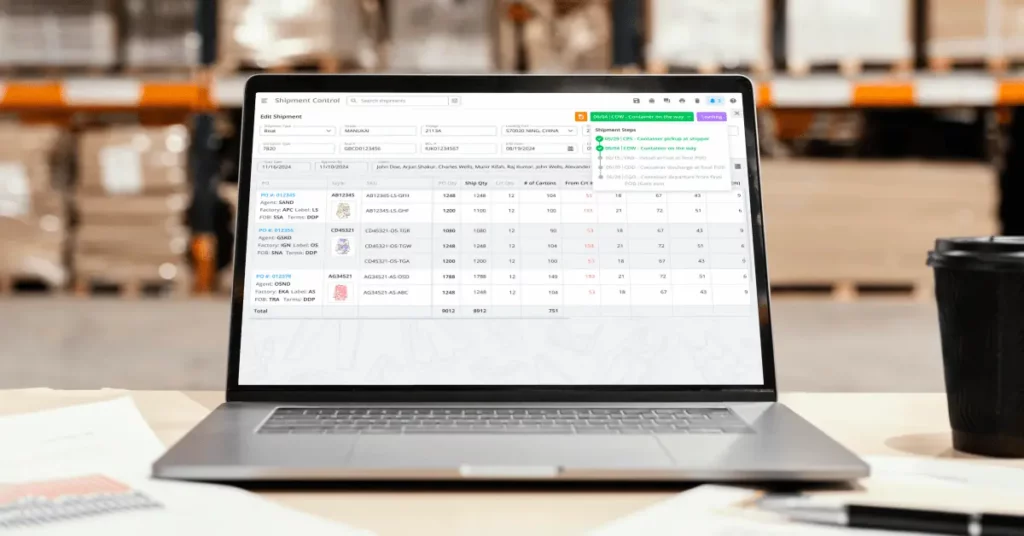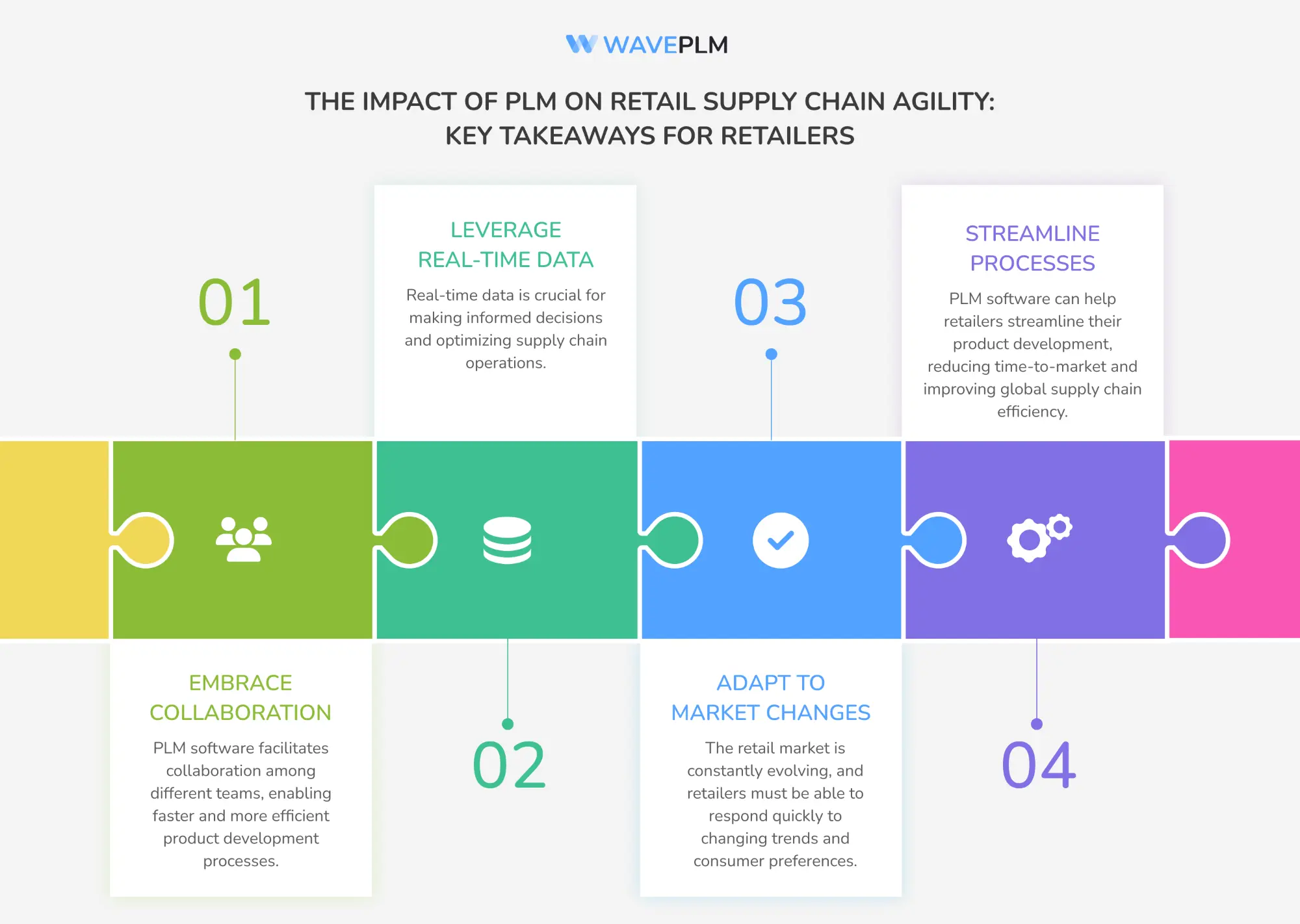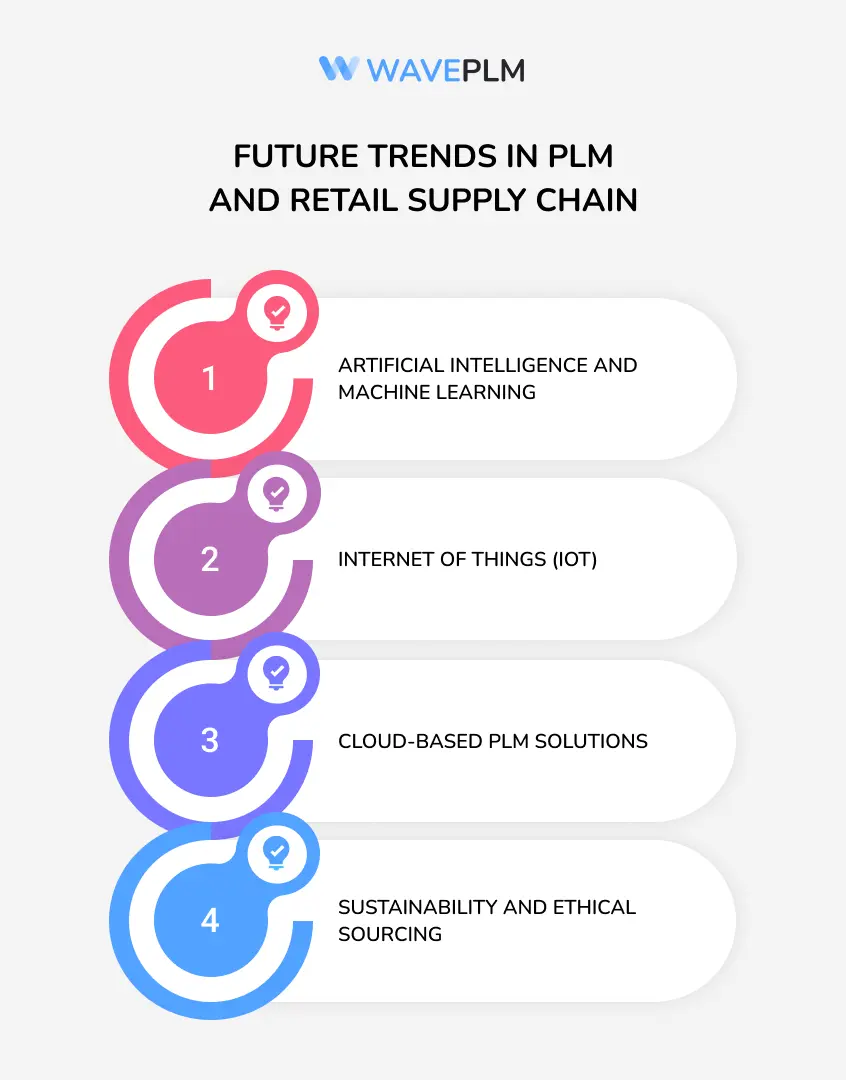
In the dynamic and fast-paced world of retail, supply chain agility is more important than ever. Retailers need to quickly adapt to shifting consumer preferences, market trends, and competitive pressures. The ability to swiftly and efficiently bring products to market is critical for maintaining competitive retail prices and meeting customer expectations. Supply chain agility ensures that retail businesses can respond to these demands effectively.
One of the most powerful tools for enhancing supply chain agility is Product Lifecycle Management (PLM) software. PLM is a comprehensive solution that manages the entire lifecycle of a product, from inception, through design and manufacturing, to service and disposal. It integrates data, processes, business systems, and people in an extended enterprise, facilitating innovation and efficiency.
This article explores how PLM drives agility in retail supply chains, the importance of real-time data in supply chain management (SCM), and presents case studies from the fashion and cosmetics industries to illustrate the impact of PLM.
How PLM Drives Agility in Retail
Speeding Up Product Development Cycles
One of the primary ways PLM software enhances supply chain agility is by accelerating product development cycles, which made huge impact on product cost. In traditional product development processes, different teams work sequentially, which can lead to significant delays.
However, PLM provides a unified platform for collaboration, allowing design, development, and production teams to work concurrently. This synchronization minimizes delays and ensures that all stakeholders are aligned, fostering a more dynamic and responsive development process.
For instance, in the fashion industry, trends change rapidly, and the ability to bring new designs to market quickly is crucial.
PLM software enables fashion retailers to streamline their design and production processes, reducing the time it takes to develop and launch new collections. This speed-to-market is a significant competitive advantage, allowing retailers to capitalize on emerging trends and consumer preferences.
Enhancing Responsiveness to Market Changes
The retail market is highly volatile, with trends and consumer demands shifting rapidly. Retailers must be able to respond to these changes promptly to remain competitive. PLM software provides the tools needed for quick iteration and modification of products. Whether it’s altering designs based on customer feedback or adjusting production plans to meet sudden spikes in demand, PLM offers the flexibility needed to stay ahead of market trends and maintain competitive retail prices.
For example, new beauty trends and consumer preferences emerge frequently in the cosmetics and fashion industry. A cosmetics company that uses PLM software can quickly adapt its product lines to align with these trends. With a central platform, the company can easily update product details like ingredients, packaging, and marketing plans. This helps keep products attractive and up-to-date for customers.

Real-time data and Decision Making with PLM
Importance of Real-Time Data in SCM
In supply chain management (SCM), real-time data is essential for making informed decisions. It allows retailers to monitor inventory levels, track shipments, and predict demand with greater accuracy. Real-time visibility into the supply chain process helps in preemptively addressing issues, thereby avoiding disruptions. Accurate and timely data enables retailers to optimize their operations, reduce costs, and improve customer satisfaction.
How PLM Provides Critical Data for Decision-Making
PLM software integrates with various other systems, such as enterprise resource planning (ERP) and customer relationship management (CRM) systems, to provide a comprehensive view of the product lifecycle and become a single source of truth for all team members. It aggregates data from design, production, and retail phases, offering critical insights that aid in decision-making. Retailers can leverage this data to optimize inventory levels, streamline production processes, and enhance overall supply chain efficiency.
For instance, a retailer can use PLM software to track the progress of product development and identify potential bottlenecks in the production and business processes. By having real-time access to this information, the retailer can take corrective actions to prevent delays and ensure that products are delivered on time. PLM software helps retailers understand what customers like and trends in the market. This helps them make better decisions about products and marketing.
Case Examples of Agility through PLM
Success Story from the Fashion Industry
One notable example of PLM-driven agility is seen in the fashion industry. A leading fashion retailer implemented PLM software to manage its extensive product lines and fast-paced design cycles. By using Wave PLM, the company was able to reduce its product development time by 30%, enabling it to respond swiftly to new fashion trends. This agility not only boosted their market presence but also maintained optimal retail prices, keeping them competitive.
Before implementing PLM, the retailer faced challenges in coordinating its design and production teams, leading to delays and inefficiencies.
With PLM, the teams could collaborate more effectively, sharing information and updates in real-time. This improved communication and coordination resulted in faster decision-making and quicker time-to-market for new products. The retailer also benefited from enhanced visibility into its supply chain, allowing it to identify and address potential issues before they impact production schedules.
Success Story from the Cosmetics Industry
Another example of PLM-driven agility comes from the cosmetics industry. A major cosmetics brand adopted PLM software to streamline its product innovation and launch processes. The software enabled seamless collaboration between the R&D and marketing teams, resulting in a 25% faster time-to-market for new products. This improved efficiency allowed the company to capitalize on emerging beauty trends and maintain favorable retail prices.
Prior to implementing PLM, the cosmetics brand struggled with disjointed processes and fragmented data, leading to inefficiencies and delays. With PLM, the company could centralize its product information, enabling better collaboration and communication among teams. The software also provided real-time insights into market trends and consumer preferences, allowing the company to quickly adapt its product offerings. As a result, the brand was able to launch new products more rapidly and effectively, staying ahead of competitors and meeting consumer demands.
Key Takeaways for Other Retailers
These success stories highlight the significant impact of PLM on supply chain agility. Retailers in other sectors can draw valuable lessons from these examples. PLM can help speed up product development, improve response to market changes, and make better decisions. This can lead to a more flexible and competitive supply chain.
To achieve these benefits, retailers should consider the following key takeaways:
- Embrace Collaboration: PLM software facilitates collaboration among different teams, enabling faster and more efficient product development processes. Retailers should encourage cross-functional collaboration to leverage the full potential of PLM.
- Leverage Real-Time Data: Real-time data is crucial for making informed decisions and optimizing supply chain operations. Retailers should invest in PLM software that provides real-time insights into the entire product lifecycle.
- Adapt to Market Changes: The retail market is constantly evolving, and retailers must be able to respond quickly to changing trends and consumer preferences. PLM software offers the flexibility needed to adapt product lines and production processes in real-time.
- Streamline Processes: PLM software can help retailers streamline their product development and launch processes, reducing time-to-market and improving global supply chain efficiency. Retailers should identify and address any bottlenecks or inefficiencies in their current processes, which provide competitive pricing.

Future Trends in PLM and Retail Supply Chain
The future of PLM in retail is promising, with several trends poised to enhance its impact on supply chain agility further.
Trend 1: Artificial Intelligence and Machine Learning
AI and machine learning are set to revolutionize PLM by providing advanced analytics, predictive insights, and automated decision-making capabilities. This will further streamline product development and optimize supply chain operations.
Trend 2: Internet of Things (IoT)
The integration of IoT with PLM will enable real-time tracking of products and materials, providing valuable data for inventory management and supply chain optimization.
Trend 3: Cloud-Based PLM Solutions
Cloud-based PLM solutions offer greater flexibility and scalability, allowing retailers to access PLM functionalities from anywhere and scale their operations as needed.
Trend 4: Sustainability and Ethical Sourcing
As sustainability becomes a priority, PLM systems will play a crucial role in ensuring ethical sourcing and environmentally friendly product development. PLM can track and manage compliance with sustainability standards, helping retailers meet consumer expectations and regulatory requirements.

Conclusion
In summary, PLM software is a powerful tool for enhancing supply chain agility in the retail sector. It accelerates product development cycles, improves responsiveness to market changes, and provides critical real-time data for informed decision-making. Retailers looking to stay competitive and meet the dynamic demands of modern consumers should consider embracing PLM. By doing so, they can ensure more efficient operations, better retail prices, and a stronger market presence.
The examples from the fashion and cosmetics industries demonstrate the transformative impact of PLM on supply chain agility. By implementing PLM software, retailers can achieve faster time-to-market, enhanced collaboration, and better decision-making capabilities. These benefits translate into improved competitiveness, customer satisfaction, and profitability.





Leave a Reply